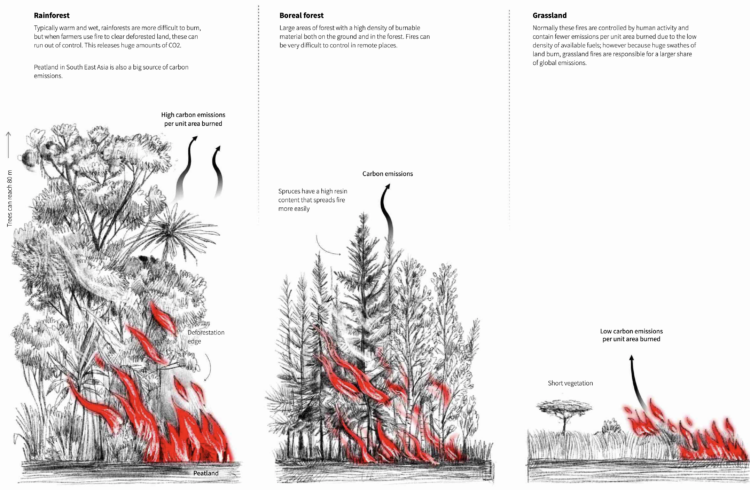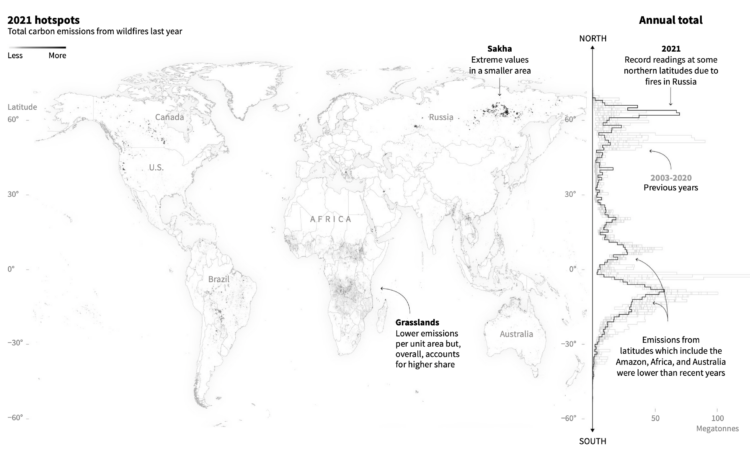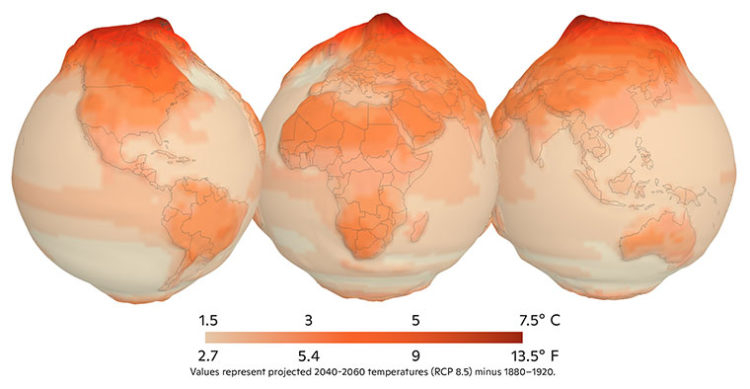Reuters reported on the fires in the Arctic and the relatively high levels of carbon emissions they release in the atmosphere. The map above shows carbon emissions from wildfire in 2021, and the chart on the right shows totals by latitude, which emphasizes the geography in the north.
The illustrations, which I appreciate and have become more of a norm in Reuters pieces, round out the maps and charts with more context:



